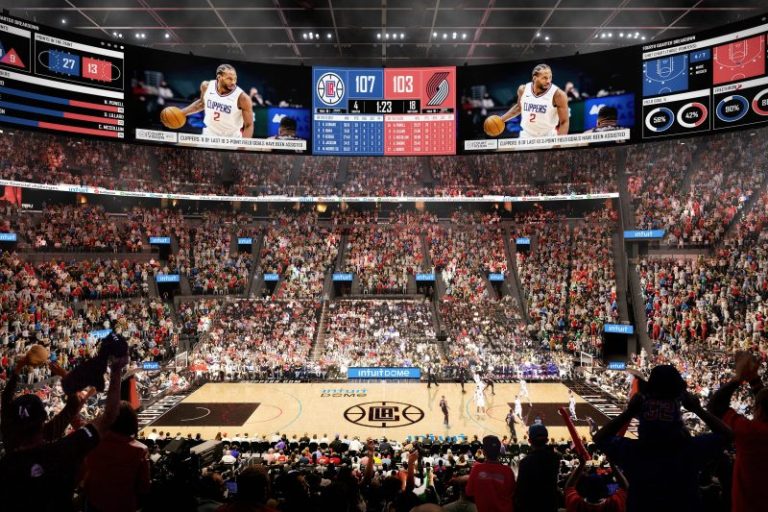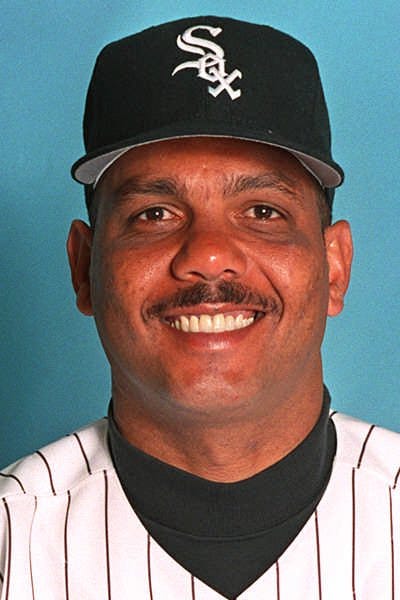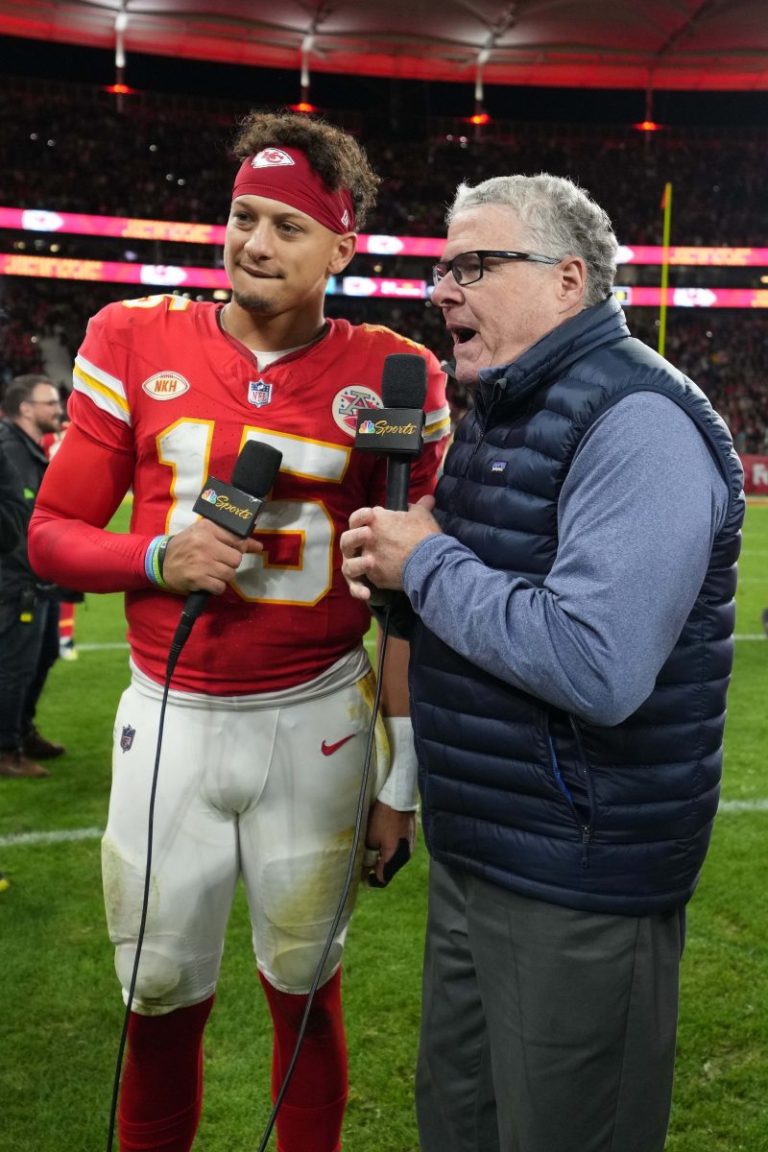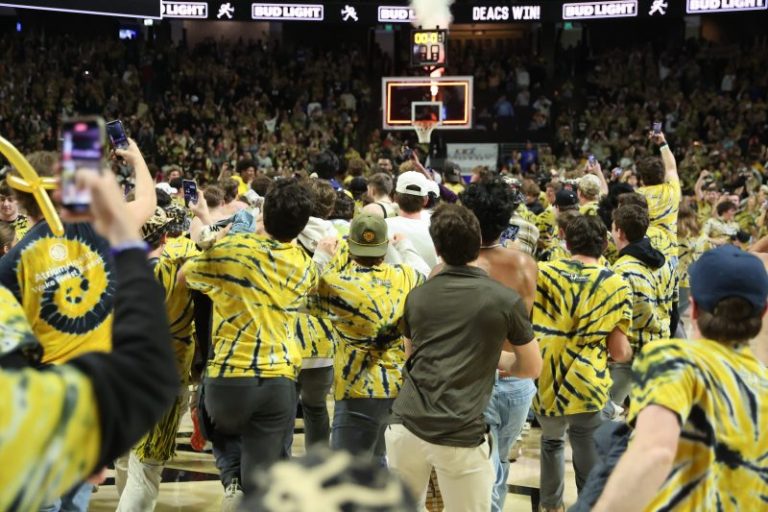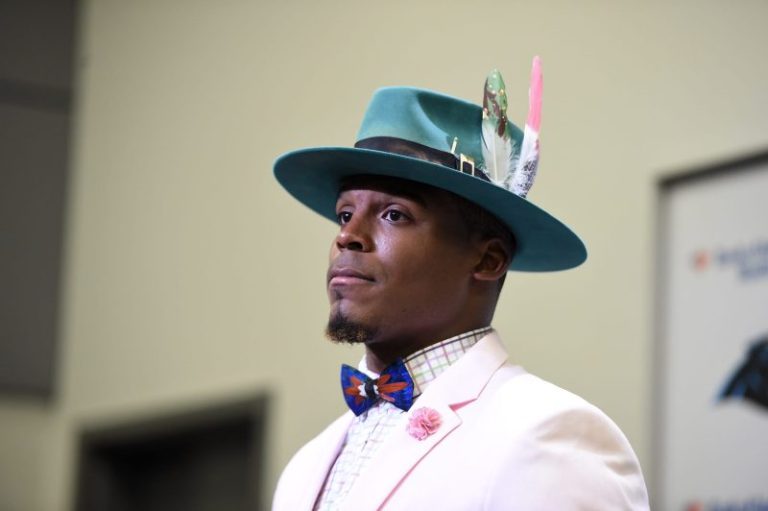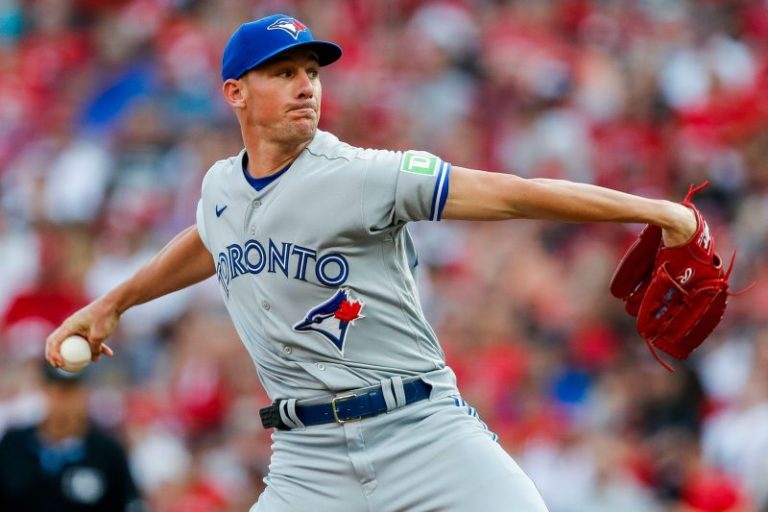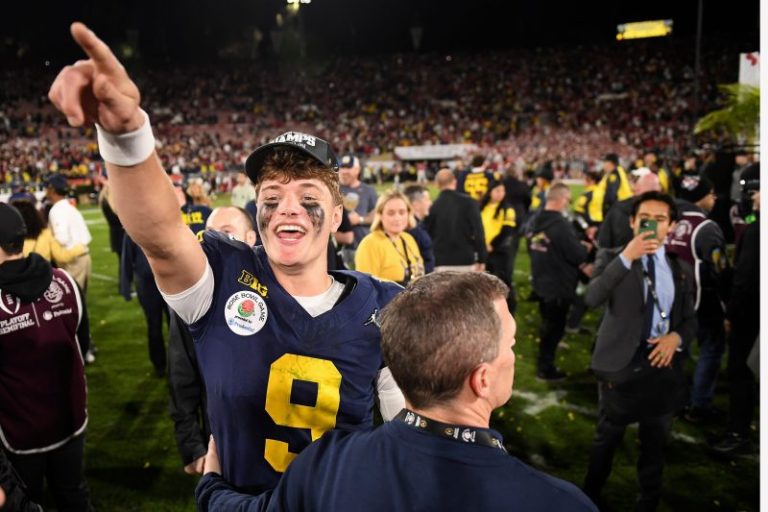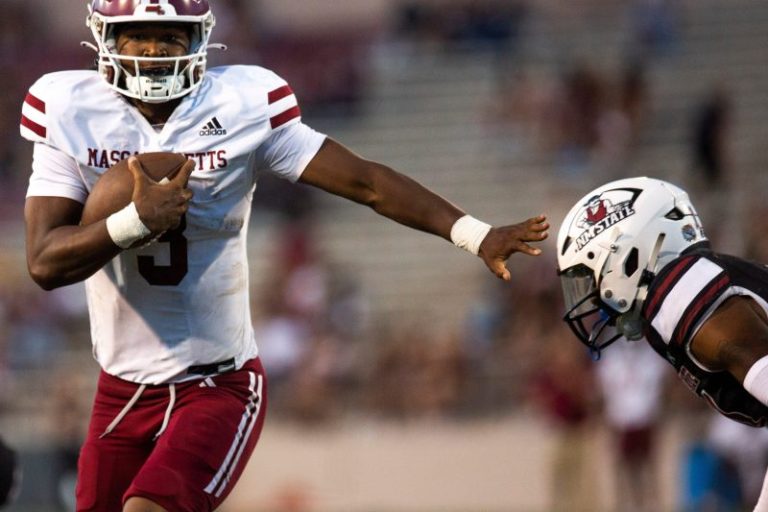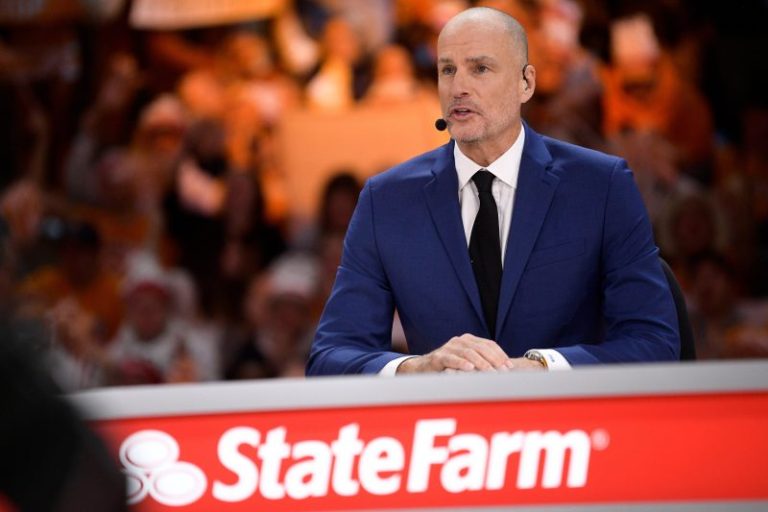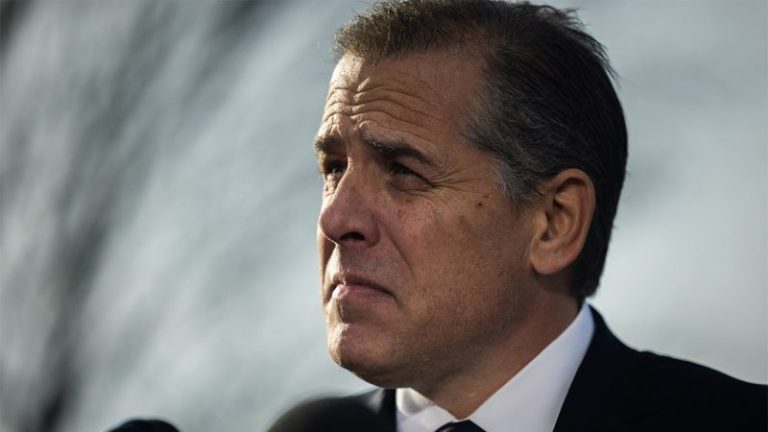DUNEDIN, Fla. – As Chris Bassitt’s career nears an apex, it’s clear there’s certain terms that will likely never be associated with the Toronto Blue Jays’ No. 3 starter.
Generational? Hardly.
Cy Young Award winner? Sure, he’s received some down-ballot love in recent years, but there will almost always be a flashier, more dominant force in any given season.
Yet as Bassitt reaches his 35th birthday, he represents an increasingly valued relic in Major League Baseball: The reliable veteran starter, capable of pitching quality innings, saving bullpens and quietly, almost invisibly, keeping a team on track and in contention.
HOT STOVE UPDATES: MLB free agency: Ranking and tracking the top players available.
In the 2023 season, Bassitt reached 200 innings pitched for the first time, capping a three-year run in which he averaged exactly six innings per start, his ERA ranging from 3.15 to 3.60. He’s helped the New York Mets and Blue Jays reach the playoffs, the latter relying heavily on a front three of Kevin Gausman, José Berríos and Bassitt, who tossed 185, 189 ⅔ and 200 innings, respectively.
That trio and the Blue Jays are both outliers: In 2023, just five major league pitchers completed 200 innings, down from 33 in 2014, and 25 managed at least 180 innings, compared to 65 a decade ago.
If it seems like Bassitt and Co. hail from a different time, well, they do: Throw in No. 4 starter Yusei Kikuchi, and all four Toronto hurlers began their professional careers between 2010 and 2012, just before the most transformative decade in the sport’s modern history began.
That period has brought both blessings and vexing curses: Analytics offer superior matchups if starting pitchers don’t face hitters a third time. Maximum velocity from pitchers ensure better outcomes. And hitters are smarter, more selective, and trained to hunt for maximum damage than ever before.
Somehow, though, the game’s most valued pitchers and their most successful teams still feature pitchers who know how to get deep – within the game and across an entire season.
Finding more of them is proving to be an industry challenge.
‘We were all blessed to have old-school, old pitching coaches that were like, ‘If you can’t pitch, what the hell are we doing?’’ says Bassitt, who came up through the Chicago White Sox organization in the early 2010s, and is entering the second year of a three-year, $63 million contract.
‘It’s going to come back. It has to.’
Certainly, Thrower vs. Pitcher and Command Vs. Velocity are two of the game’s eternal points of tension, probably in perpetuity. Throw in reams of matchup data that strongly advocate quicker hooks for starters and there’s no shortage of ways to win a ballgame these days.
But over 162 games – and the 11 to 13 additional postseason victories required to win the World Series – those optimal in-game choices are far less sustainable, especially in an era when Major League Baseball limits pitching staffs to 13.
In 2023, the five teams requiring the fewest relief innings won between 87 and 90 games, with all but the 88-win Mariners making the playoffs. The next five include the champion Rangers and three more playoff teams.
While the development and handling of pitchers does not necessarily encourage gaudy innings pitched totals, the market certainly rewards it.
The Los Angeles Dodgers delivered the largest guaranteed pitching contract – $325 million – for a right-hander who’s never pitched an inning in the big leagues. Yep, Yoshinobu Yamamoto’s dominance in Japan – where he hit 193 innings pitched as a 22- and 23-year-old – convinced several teams to offer him a blank check, virtually sight unseen.
It’s not a bad bet, given the challenge MLB franchises face mastering a starting pitching equation that amounts to an equilateral triangle: Maximum velocity, innings pitched and staying healthy.
‘I wish I had an answer to that,’ says Mike Elias, executive vice president and general manager of the AL East-winning Baltimore Orioles.
‘If I did, it would probably be worth a billion dollars.’
How, then, can the industry produce more Chris Bassitts?
‘What’s the cost over 162?’
The cavalry isn’t coming anytime soon. Of the 150 projected major league starters in 2024, the median career high for innings pitched is 167. And the landscape remains disproportionately ruled by Old Guys: 52 of the 150 (35%) were drafted in 2012 or earlier, with the median draft year 2015.
It skews even older for current or erstwhile horses: Of the projected starters who have reached 180 innings at least once in their career, 44 of 58 (76%) were signed or drafted in 2014 or earlier. And of the 23 hurlers with a 200-inning season under their belt, 12 hail from the 2010 or earlier draft class, led by 2002 draftee Charlie Morton, who at 40 will be paid $20 million by the Atlanta Braves.
If Morton is well-compensated to represent the past – and he has averaged 174 innings the past three seasons in Atlanta – his rotation-mate almost embodies the future.
It’s just that Spencer Strider increasingly looks like a freak of nature.
Strider is just 25, a 2020 draftee out of Clemson and stands just 6 feet tall, yet struck out 281 batters in 2023, largely on the strength of his 98-mph fastball. He also managed to do it over 186 ⅔ innings while winning 20 games, seemingly proving that velocity and longevity can harmonize.
Strider believes the industry is predisposed toward assuming hard throwers will, quite literally, run out of gas as a game goes on. He points to the Stuff+ metric, which measures velocity, break, extension and other attributes; it suggests that Strider, in fact, gets nastier as the game goes on.
The outcomes didn’t suggest as much in Strider’s 2023 season: His opponent OPS jumped from .536 in the fifth inning to .923 in the seventh, and .626 the second time facing a batter to .665 the third time around.
‘I think it’s easy to look at a guy giving up runs later in an outing and think that’s due to a diminishment in stuff, due to fatigue,’ says Strider. ‘And maybe if it’s a hard-throwing guy, the society of baseball has decided, if you throw hard, your issue is going to be running out of energy.
‘Whereas somebody who maxes out at 88 mph, they’re just as easily going to run out of energy. We just don’t associate it with velocity.’
Indeed, the benchmarks of “that’s enough” have long been arbitrary and unknowable in baseball – from 100 pitches as a symbolic red light that a pitcher’s done, to informed guesswork on how many more innings a young arm can handle year-to-year.
At 24, Strider was easily the youngest pitcher to top 180 innings a year ago, putting him even further ahead of the game. Usually, developing into a horse takes time – and age can be a blessing.
‘You definitely have to find yourself,’ says Phillies ace Zack Wheeler, 33, who made his major league debut in 2013. ‘You have to know who you are as a pitcher. My body let me overthrow sometimes, when I was a little bit younger. I think that’s why I’ve had better second halves.
‘Now that I’m getting older, there’s more (awareness) of that and honing that and keeping that under control.’
‘Front offices are paying for strikeouts’
Baseball is entering a phase where pitchers hitting their mid-20s came up in the era of maximizing velocity and leveraging data to enhance pitch grips, shapes and outcomes. All are necessary weapons in what’s increasingly a power-on-power game.
The radar gun is often the first bridge for a young pitcher to get on college and pro scouts’ radar – and a key arbiter at contract time.
‘Front offices are paying for strikeouts. They’re paying for home runs,’ says Strider, beginning the second year of a six-year, $75 million extension signed in October 2022. ‘Because those are certain outcomes. Every home run is a run. Every strikeout is an out. If that’s what’s systemically encouraged, then you’re developing players that way.
‘And it bleeds down all the way to amateur baseball.’
And all that is great, from draft day, through the minors and, for those fortunate enough, at free agency. But plenty of foals take detours along the way to the stable: The percentage of MLB pitchers who have undergone Tommy John elbow reconstruction surgery reached 35.3% in 2023, a linear year-by-year increase from 27.4% in 2016, according to injury analyst Joe Roegele.
That includes every aforementioned arm in this story. The injury disruption – and its suspected but unknown correlation to increased velocity – is but one challenge facing organizations who now face 13-pitcher staff limits, a ceiling on total number of minor leaguers in their organization and supply-side problems in free agency.
It often puts the quick-hook mentality of “win today’s game, today” in conflict with taking a balanced and properly-rested staff into baseball’s increasingly lengthier postseason.
And that can be a challenge when the emerging arms were grown in an all-gas, no-brakes environment.
‘What’s the cost over 162 (games) to continually do that?’ asks Yankees pitching coach Matt Blake. ‘That’s where you’re getting to that marriage of, this is a better option out of the pen, today. But in order to have this be a better option in September and October, when do we make those decisions to make the guy keep going, and how well prepared are they to handle the third time through?
‘Maybe that’s educating them on not going out guns blazing in the first couple (innings). You see the more advanced major league starters – (Justin) Verlander, (Gerrit) Cole and these guys that will grow their velocity as the game goes on. There’s an art to that – understanding how to get into the game.
‘Now, you have to have enough stuff to not be full throttle and pitch your way through that part of the game. But also have enough durability to have stuff at the end of the game. They’re qualities that are hard to come by, but you need to create more of those to protect your bullpen.’
Cole, whose $324 million deal with the Yankees was trumped by Yamamoto, won his first Cy Young Award last year, at 33. He pitched an AL-high 209 innings, one year after striking out a career-high 257. He says he’s “won a lot of games being creative,” and anticipates maintaining success when his 97-mph fastball loses some steam.
And the 200 in the innings column holds nearly as much meaning as the 200 in the strikeout column.
‘I take a lot of pride in it,’ says Cole. ‘I would have loved to throw 250 innings. That would have been a blast back when people were throwing 250 innings. The strike zone was a little larger, too, which also would’ve been a blast.’
Yet Cole is, in fact, generational, a Cy Young winner, perhaps edging toward Cooperstown.
What about the mere mortals?
‘That’s not going to work’
Bassitt is no Luddite.
Oh, he certainly exudes old-school ball vibes, and credits a trio of White Sox organizational pitching coaches – former major leaguer Britt Burns, recently reassigned bullpen coach Curt Hasler and pitching advisor J.R. Perdew – for his development.
Yet he also embraces data, and relies on the ubiquitous cameras and tablets to maximize a deception-based arsenal that features no pitch coming out harder than 93 mph.
But Bassitt still can’t believe what he witnesses in bullpen sessions, when a younger arm delivers a pitch and immediately turns around, asking about velocity and spin and movement and whether a pitch was good or bad or not.
His point: You should know most, if not all the answers after the ball leaves your hand.
‘Right now, the muscle memory I see in so many young guys is the iPad. That’s not going to work,’ says Bassitt. ‘Once technology got involved, and iPads were implemented, and you could track velo and spin and all this stuff, it was such an influx of guys saying, ‘All right, we’re going to chase vertical movement, we’re going to chase velo,’ which is good. It’s a tool. But you still gotta learn how to pitch.
‘Once you get on the mound, and you’re facing elite lineups, you don’t have an iPad. We’re not allowed to tell you this is good, or this is bad. You have to know it.’
As Bassitt talks, Gausman, their $115 million staff ace, notes a sign that the Washington Nationals hung in their spring training bullpen: “I don’t care how hard you throw ball four.”
That’s the message from Nationals GM Mike Rizzo, that maximum velo is useless without command. It’s a centuries-old sentiment, though perhaps it needs a refresh if too many command-poor velo robots have bubbled up to big league camps.
And perhaps that’s another lesson Bassitt can impart. He was an all-state point guard and quarterback– “I was a good basketball player; I wasn’t a good quarterback” – at his Ohio high school, and those attributes are still appreciated.
‘I definitely think the athleticism of Chris Bassitt is something that’s underappreciated,’ says Blue Jays GM Ross Atkins, who signed Bassitt to a three-year, $63 million contract before last season. “The ability to repeat his delivery in a way that allows him to be consistent with a very diverse arsenal is remarkable.’
Says Braves catcher Sean Murphy, his former batterymate in Oakland: “Chris is a great athlete. His delivery doesn’t particularly scream amazing athlete at you – he knows that; I’d say it to his face – but you watch him work in the weight room. Chris is very flexible; he does everything he needs to do.
‘There’s something to be said for a guy that we could rely on every five days, go out and make his start and give the bullpen a rest. Chris has great numbers every year, and I don’t think he gets enough credit.’
Bassitt, like many baseball officials, urges young athletes to diversify, to play as many sports as long as possible before specializing. The payoff may not be evident for a while.
‘No, it’s not helping your hitting or pitching. But it is helping you learn your body,’ he says. ‘We want to be an athlete. You don’t want robotic, ‘All I can do is baseball and all I can do is pitch.’’
For now, there aren’t enough Bassitts.
It’s why Aaron Nola can post a 4.46 ERA in 2023 and equal his career-worst 4.03 FIP, yet the Phillies didn’t hesitate to retain him for $172 million, with one eye on his five straight full seasons with at least 180 innings pitched.
It’s why Cardinals president John Mozeliak lavished a Bassitt-like three-year, $75 million deal on Sonny Gray shortly after free agency opened, and added veteran innings eaters Kyle Gibson and Lance Lynn to a club that finished 71-91 a year ago.
It may not be a panacea. But with each passing year, more horses are put out to pasture – most recently the Cardinals’ Adam Wainwright, who once hit the upper 90s with his fastball.
‘When he finished his long and successful career,’ says Mozeliak of the 200-game winner, ‘he’s barely touching 87. What did he do? He compensated with making pitches and spinning the ball and was able to have a long and successful career.
‘If guys really want a successful starting pitcher career, they’re going to have to understand there’s a give and take.’
This post appeared first on USA TODAY

